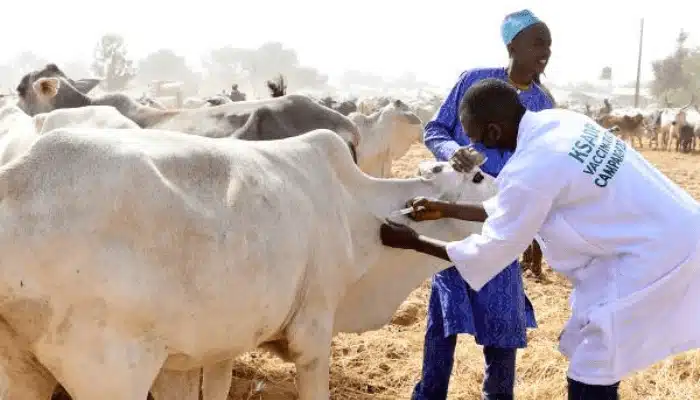Veterinary Service Directorate’s Report Reveals Measures Taken to Combat Anthrax Outbreak in Upper East Region
The Veterinary Service Directorate of the Ministry of Food and Agriculture has released a comprehensive report addressing the anthrax cases reported in the Upper East Region.
The report highlights the efforts made thus far to control the spread of the disease within the region and prevent its transmission to other parts of the country.

Following the confirmation of anthrax cases by the Ministry of Food and Agriculture, the Veterinary Service Directorate conducted sample analyses in its laboratory, validating the presence of the disease.
Timely Policies
In response, Dr. Bryan Acheampong, the Sector Minister, issued a directive to restrict the movement of animals within, into, and out of the Binduri District, where the initial cases were recorded.
The public was advised to exercise vigilance, purchase meat only from certified abattoirs, and promptly report any animal deaths to the nearest veterinary unit or health facility in the affected area.
Additionally, a mass vaccination campaign targeting animals in the affected areas was carried out, accompanied by a ban on the consumption of meat from deceased animals in those regions.
Individuals with suspected cases were encouraged to seek professional guidance and advice from the nearest veterinary services directorate.
How is it being controlled?
The report also outlines key policies for anthrax control, such as conducting ring vaccinations within an 8-kilometer radius during outbreaks, treating in-contact animals with appropriate antibiotics, and implementing proper carcass disposal methods through burning or burying.
Surveillance efforts have been intensified through collaboration among the Veterinary Services, Ghana Health Service, and Environmental Health Department of the Local Government Service.
This concerted approach aims to detect and diagnose cases early and ensure effective control measures, thus preventing further loss of life and economic setbacks.
What does this mean for Public Health?
The report underscores the public health implications of anthrax, primarily as an occupational hazard for individuals handling processed hides, animal hair, bone products, wool, and infected wildlife.
Anthrax can manifest in different forms, including cutaneous, gastrointestinal, and inhalation infections. To mitigate this public health challenge, the report emphasizes the importance of a robust animal health system.
Preventive measures include active and passive disease surveillance conducted nationwide by the veterinary services to detect diseases early and facilitate timely intervention. Routine vaccination of cattle in endemic areas is also crucial.
Proper disposal of carcasses, either through burning or deep burial, along with site disinfection, is mandated to contain the spread of the disease.
This report serves as a comprehensive overview of the measures taken thus far to combat the anthrax outbreak, emphasizing the significance of collaboration and proactive surveillance to protect both animal and human health.

